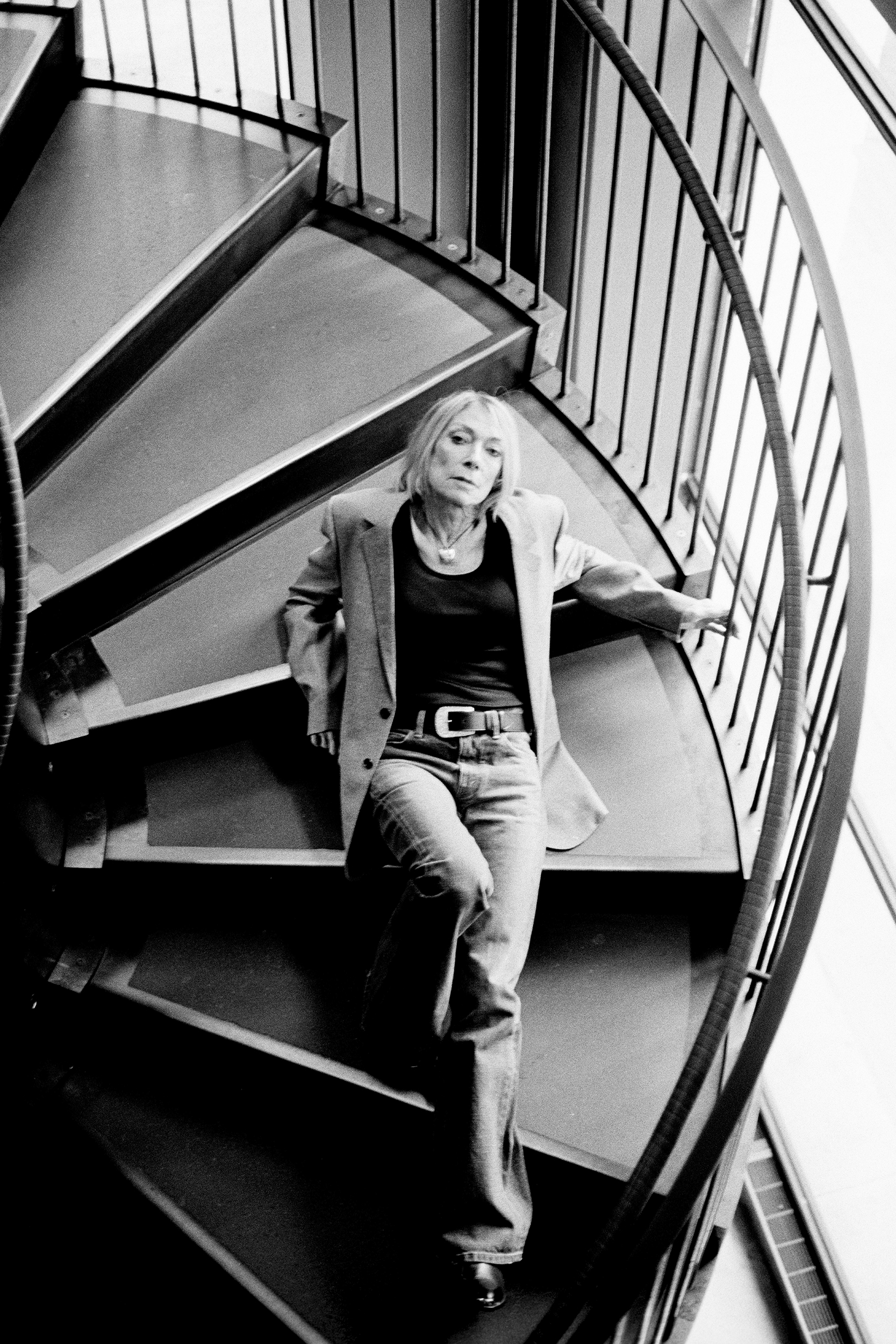There’s an image that comes to mind when you think about the platonic ideal of the indie rock girl: she stands on a stage in a mini skirt, one ankle-booted foot placed firmly on the downstage monitor, guitar slung low, hair shaggy, sunglasses on. She’s simultaneously remote and larger-than-life, a paragon of cool.
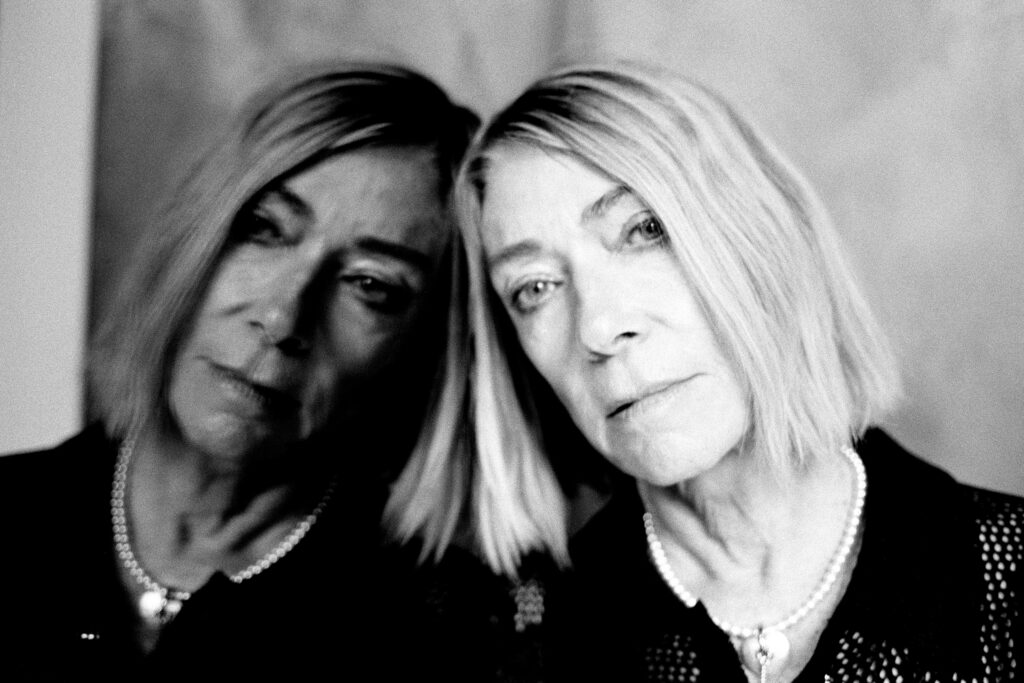
For forty years Kim Gordon has been the real live woman standing inside this silhouette. You could say she invented the indie rock girl archetype, or that it was invented around her. Gordon grew up in the nihilistic dreamscape of 70s L.A. and attended art school there before moving to gritty, grimy New York in the early 80s. It was the era of Basquiat and Danceteria, young Madonna and old Warhol. And it was there—in that burned-out promised land—that Gordon met her future husband, Thurston Moore. Together they formed Sonic Youth, the legendary noise rock band that went on to establish a signature sound (anarchic, guitar-soaked) and way of life (rigorous, communal) that remains profoundly influential to weirdo aspiring iconoclasts.
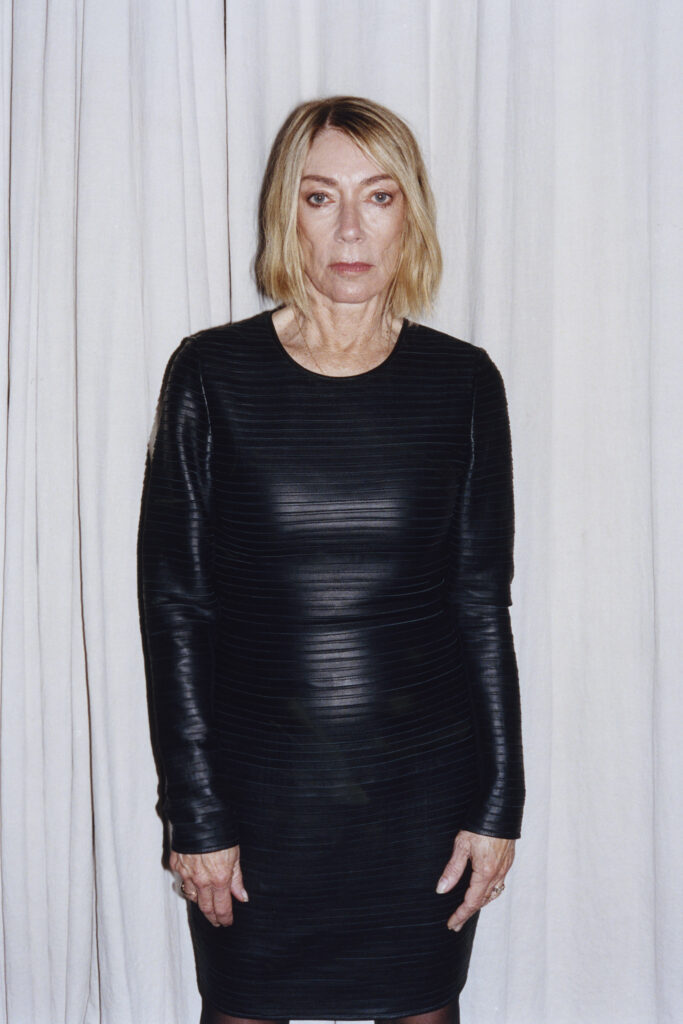
In 2012 Sonic Youth ended, as did Gordon and Moore’s marriage. Now 70, Gordon is still very much the imperious- seeming rock and roll goddess you’d expect. As she settles into a chair in the lobby of her New York hotel and orders a tea, I find myself doing what I do every time I see her in real life: deconstructing her outfit. Why does that sweater look so good? What are those necklaces? Maybe I should go blonde?
But she’s also an artist with a new record—The Collective, Gordon’s second solo album, out March 8th—who wakes up every day into a swell of emotions about the release. “I’m frustrated at how long it’s taken, to be honest,” she says. But then, “the idea of having to memorize lyrics and perform it live is kind of terrifying.” She smiles. “Also, is it really good or is it bad?”
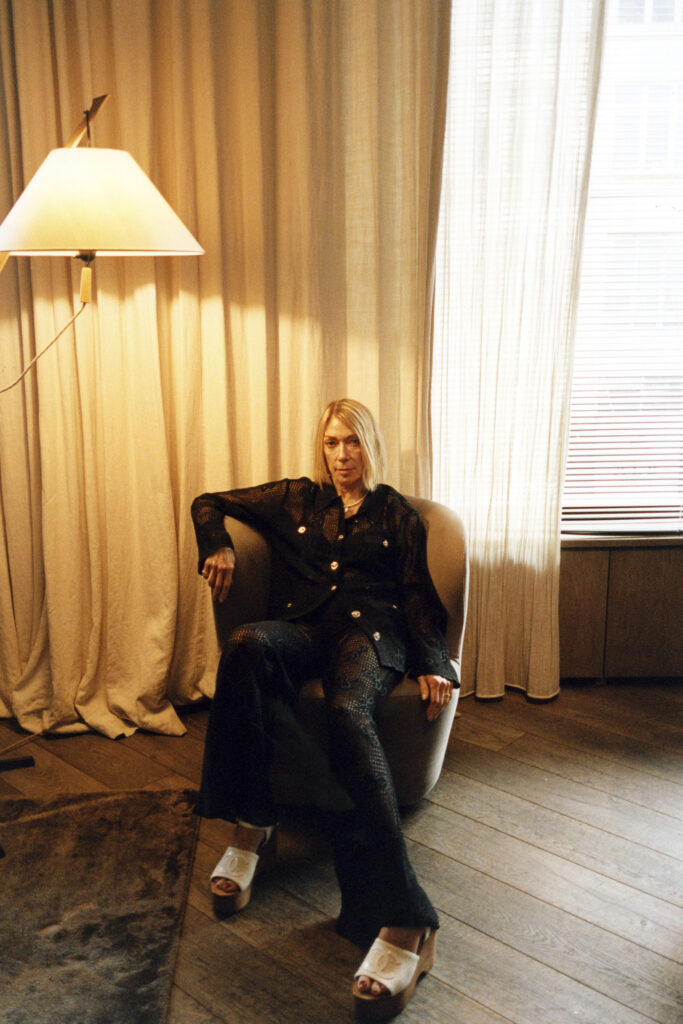
Spoiler alert: It’s really good. The lead single, “Bye Bye” features Gordon’s boss femme vocals sing-speaking a pre-departure to-do list (“Call the dog groomer, call the vet …Milk thistle … Advil… vibrator”) over layers of seductively sleazy noise. L.A.-based producer Justin Raisen made the beats and Gordon brought the “dissonant guitars and fractured abstract poetry.” She smiles broadly. “It was almost a challenge: like, deal with this.”
There’s space in a post-Sonic Youth world for this Gordon – the restless solo musician with difficult, pretty ideas. And there’s space for other parts, too, like Kim Gordon the visual artist. Her first gallery show was at White Columns in New York in 1980, her most recent was in L.A. last year, and she’s currently pondering a series based on iPhone photos of people’s living rooms. It could be cool, like the work of “an interior decorator slash psychologist.” Or, “it could end up just looking like Airbnb art.”
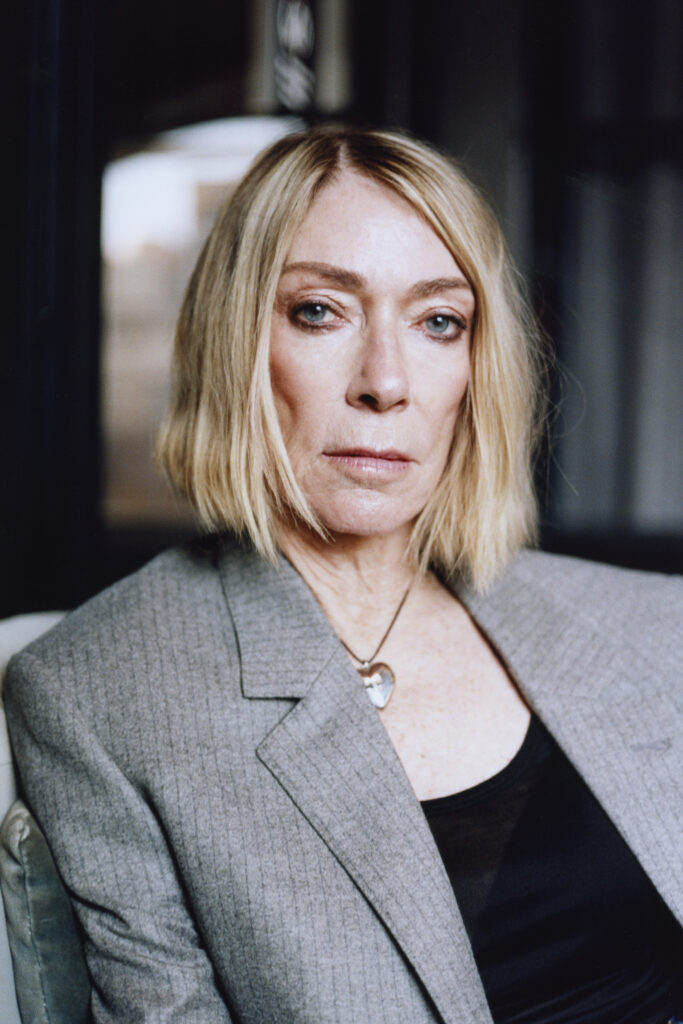
Then there’s Kim Gordon the writer. Her first published piece was an essay on masculinity in the No Wave scene called “Trash Drugs and Male Bonding” (1980). Her latest is a tribute to her brother, Keller Gordon, who she has described as the single biggest influence on her life, and who passed away last year. “I wanted to celebrate him,” she says. “He was brilliant but because he was schizophrenic, he never got to build anything.”
The always-and-forever “girl in a band” (the title of Gordon’s 2015 memoir) is also an always-and-forever artist, relentlessly searching for her next moment of self-expression. “I may be a sociologist more than anything,” Gordon reflects, as she finishes up her tea. “I don’t know,” she continues. “I’m still waiting to grow up and feel like an adult.”
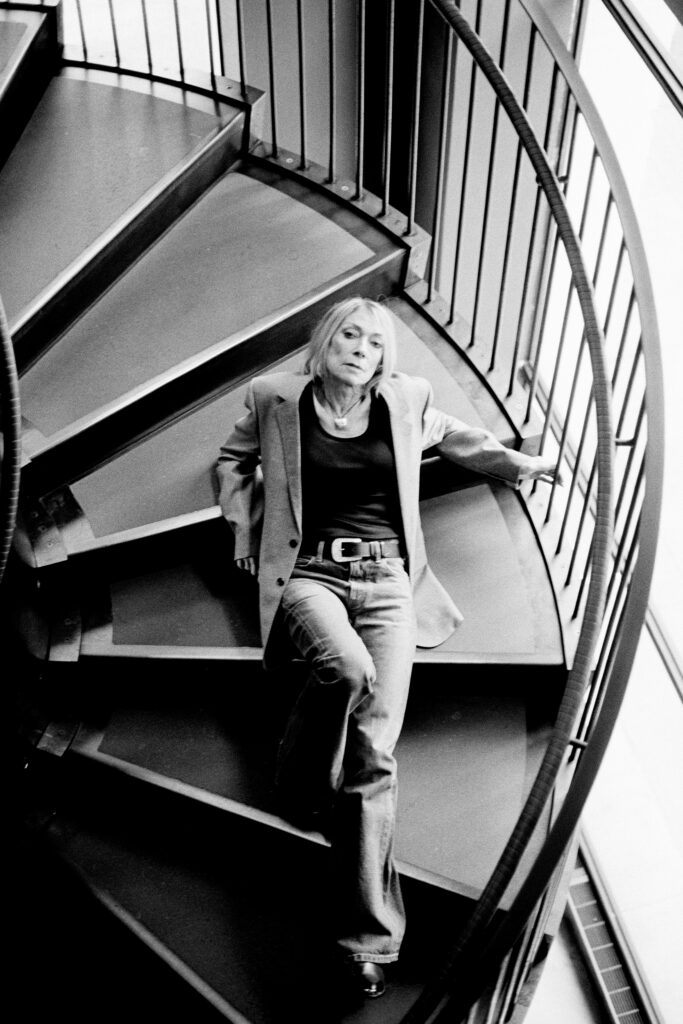
This story appears in the pages of V147: now available for purchase!
Photography Sam Hellmann
Fashion Xander Ang
Makeup Pascale Poma
Hair Marki Shkreli (The Wall Group)
Stylist assistant Brandon Brownstein
Location 11 Howard Hotel
Discover More






